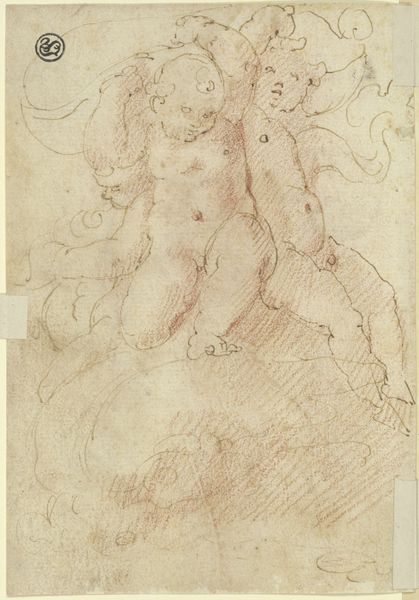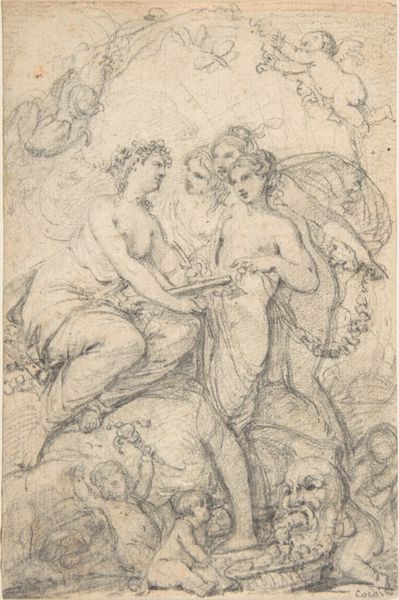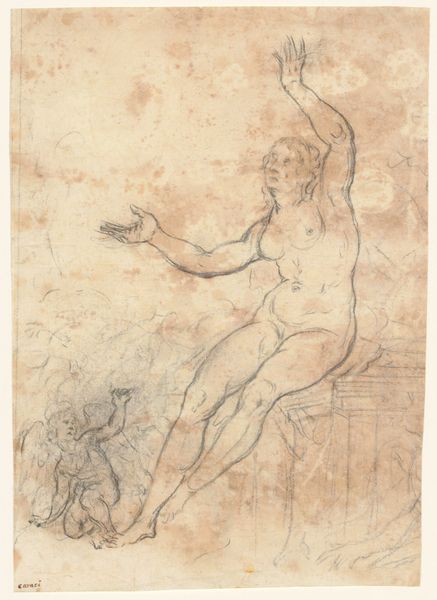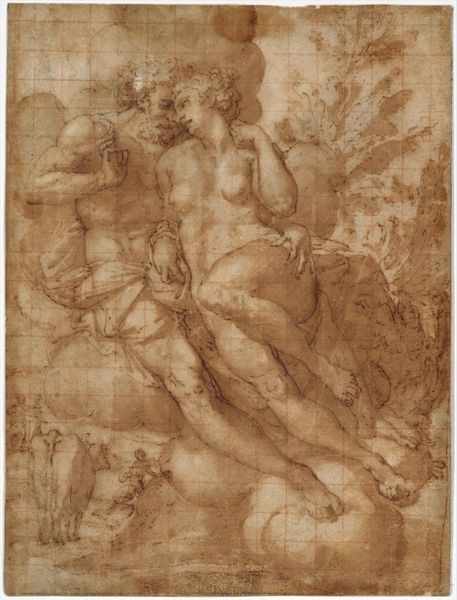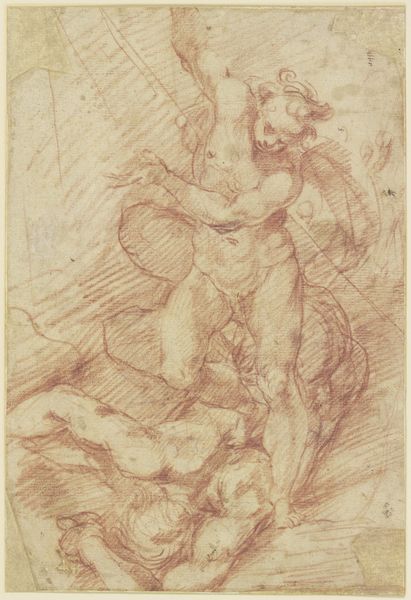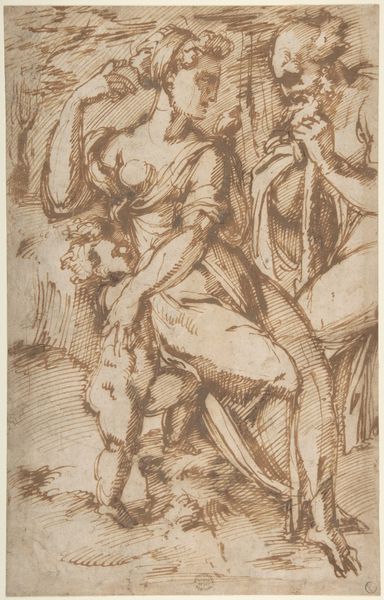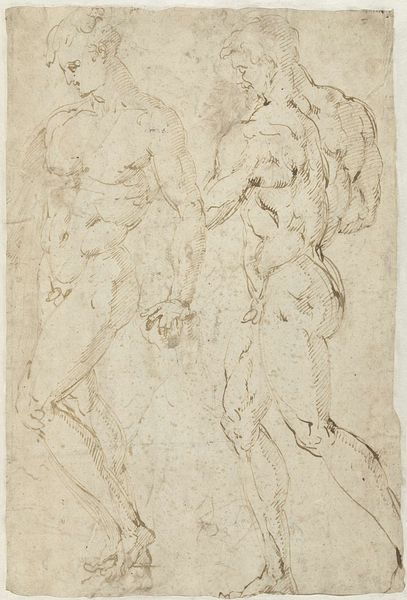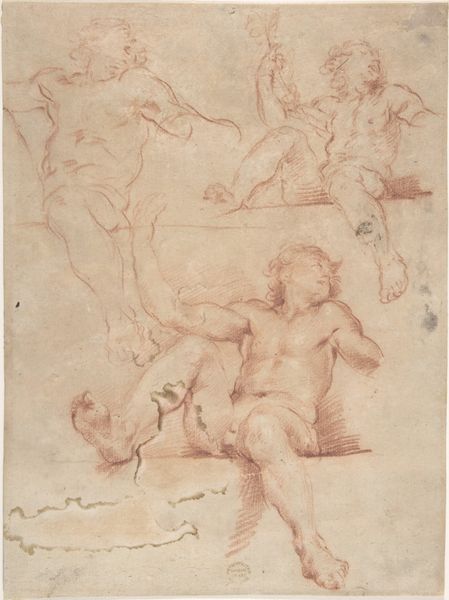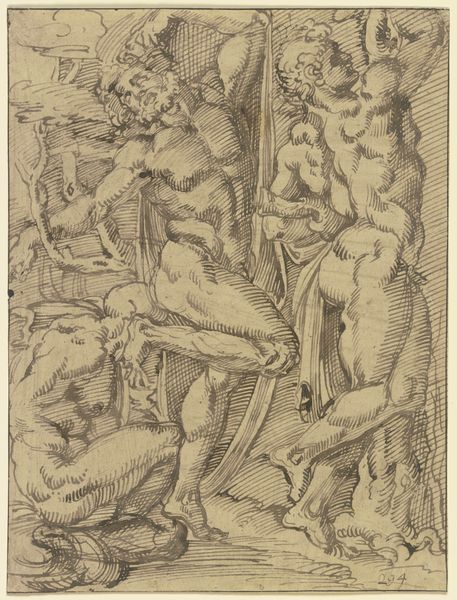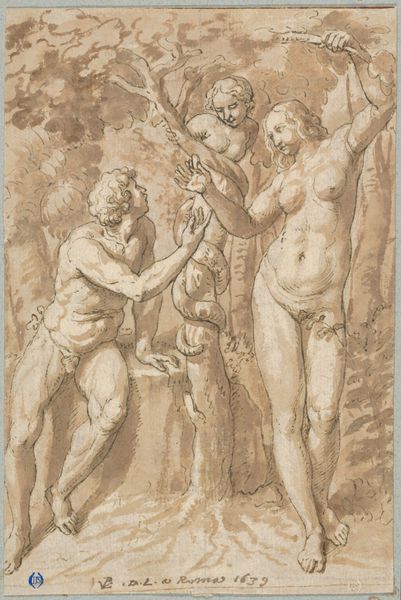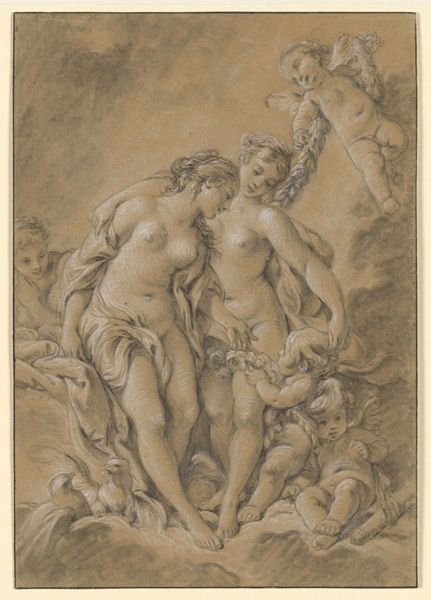
drawing
#
portrait
#
drawing
#
figuration
#
11_renaissance
#
child
#
genre-painting
Dimensions: 5-1/16 x 4 in. (12.9 x 10.1 cm)
Copyright: Public Domain
Curator: This drawing, known as "Studies of Children," is currently held at the Metropolitan Museum of Art. Although the artist remains anonymous, it's estimated to have been created sometime between 1600 and 1700. The medium is drawing. Editor: It has a fleeting, almost playful quality. The red chalk lends itself to the softness of the figures, their forms not quite delineated. The bodies of the children have a real vulnerability. Curator: The very anonymity of the artist, coupled with the broad timeframe of its creation, prompts questions about artistic intention during this period. Consider how the perception and depiction of children were evolving socially and culturally. It may have been produced within a workshop, used as preparatory sketches rather than for grand commissions. The casual quality that it has now, may have been intentional, made in that way as a teaching tool. Editor: Yes, that suggestion does track with my observation regarding the line. If we consider it as part of a developmental pedagogical technique it could explain some of what makes it appear informal to modern eyes. Were drawings like these shown in domestic contexts or private academies? How might its display be understood? Curator: Likely private academies or artist’s studios as examples. But this then raises questions about access, class, and gender too. What sort of status did it give someone, say, of higher social stature who would collect or commission works such as this? Editor: The figures almost appear weightless against the ground—or any environment— and the anonymity also speaks to this; do we project what we feel about that anonymity? As a depiction it feels somehow untethered. Curator: Exactly. It highlights the historical absence of recognition afforded to many artists, especially women, of the time and that, itself, must factor into our understanding of its modern-day presentation within an institution like the Met. Editor: Looking at "Studies of Children" certainly encourages reflection on the representation of children and visibility through history. Curator: Indeed, reminding us of the importance of continually questioning dominant narratives.
Comments
No comments
Be the first to comment and join the conversation on the ultimate creative platform.
